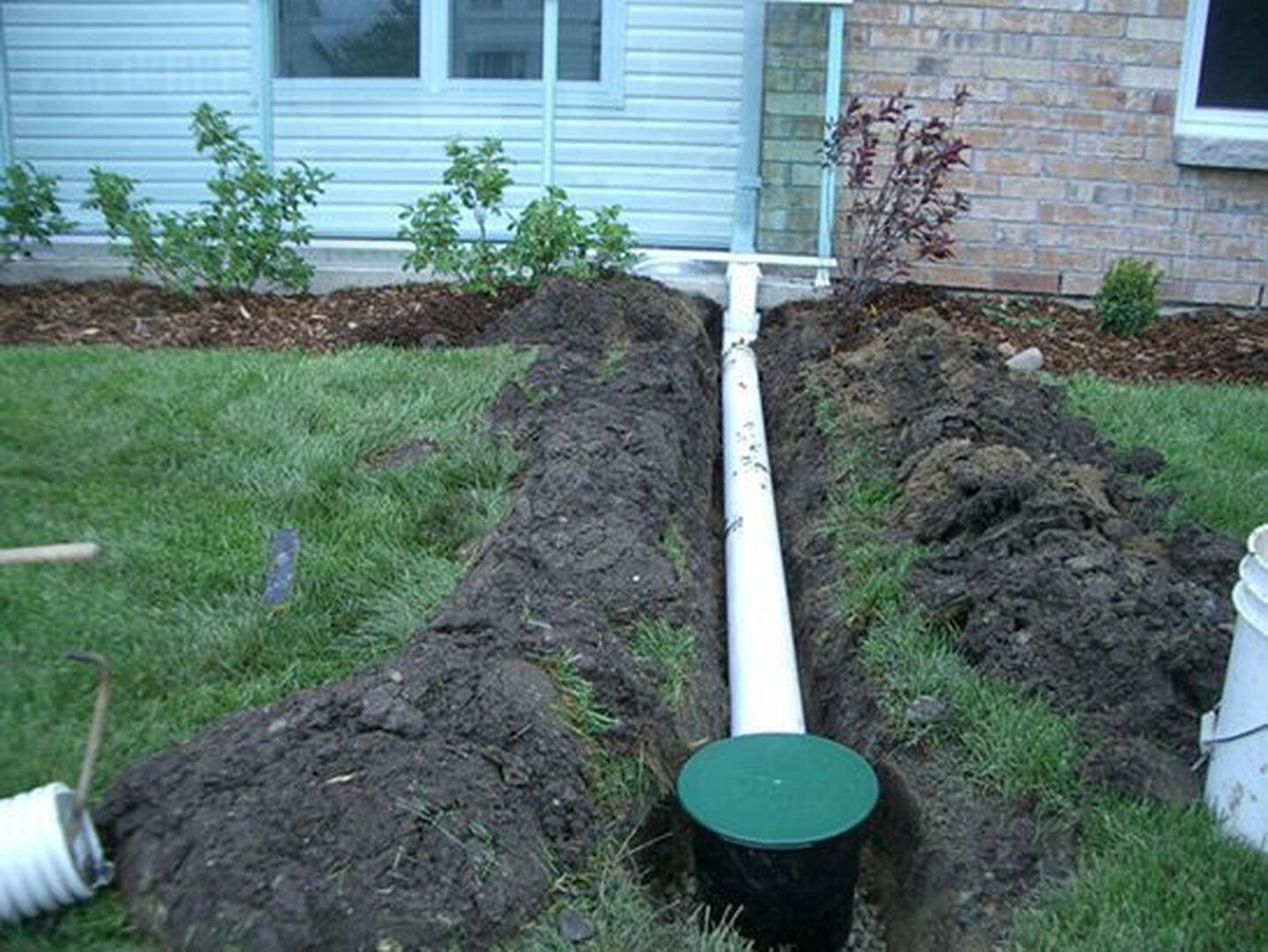How to Do Underground Downspout Extensions the Wrong Way

One of the main contributors to basement water problems is the oversaturation of soil outside the foundation.
When this soil absorbs water, it expands and creates pressure against the foundation walls. This pressure can create cracks in concrete walls or mortar joints and can ultimately cause structural damage to the foundation. When cracks or other openings are present, the pressure can force water into the basement.
This area is particularly vulnerable to saturation because it represents part of the original excavation required to build the house and the soil that was backfilled is more porous than the undisturbed soil around it. This zone typically extends 10 feet from the foundation.
Two factors are the biggest contributors to oversaturation of this soil – clogged rain gutters and downspouts that deliver concentrated amounts of water to the ground.
A clogged rain gutter allows water to flow in sheets off the edge of the roof during heavy rains and land next to the foundation where it is absorbed into the soil.
A poorly designed downspout can take all this water and dump it in four or five places around the house, right at the spot where soil and foundation meet – a prime spot for over-saturating the soil and creating a wet basement.
The solution to this problem is to extend the downspout away from the house so that water is discharged beyond the ten-foot zone that will ultimately cause basement water problems. The best way is to install underground extensions that won’t fall off the downspout, look unsightly or have to be disconnected and moved every time the lawn is mowed.
It sounds like (and is) a simple solution but, when done badly, can often perform as poorly as no extension at all.
Doing Underground Downspout Extensions the Wrong Way
A properly installed underground downspout extension consists of an upright PVC pipe that runs into an elbow joint below ground with another length of pipe, at least ten feet long, extending underground away from the house. Topping the upright pipe is a rectangular debris filter with a slanted top that keeps leaves and other debris out of the pipe and allows it to slide off to the ground.
The pipe will discharge to a bubbler pot that distributes water on the surface, a dry well that distributes water below ground or, in some circumstances, a municipal storm sewer.
It’s a pretty simple system but here’s how some installers get it wrong:
Bad Debris Filter – Some installers will place a 6” adapter on top of their 4” pipe and put some screening inside to make a filter. This looks finished and professional but, when debris lands on the screen, the “bowl” created by the larger adapter won’t let it escape and it very quickly accumulates and clogs the filter. The water? It’s cascading off onto the ground around the foundation.
No Debris Filter – Some installers will leave the downspout emptying into an open upright pipe with no debris filter, leaving a gap between the downspout and pipe to prevent freeze-ups. Obviously, this allows leaves, needles and the debris to end up in the pipe but it also creates an inviting ready-made home for small animals such as chipmunks.
No Bubbler Pot or Drywell – Some underground downspout extensions are left with just a raw pipe end sticking out of the ground. This can allow debris to accumulate near the end of the extension and cause water to back up. It’s also an inviting entrance for small animals like squirrels and skunks. Some installers will place a drain grid on the pipe that is quickly popped off by the force of the discharge.
Wrong Material – The right material for an underground downspout extension is strong PVC pipe that resists soil movement and belowground exposure. Some installers will use the same corrugated plastic pipe that is meant for interior drain tile that will, instead of carrying the water to the end of the pipe, allow it to seep into the soil exactly where it shouldn’t be. Others, who apparently have no idea of how to do it right, will use cheap extensions from the big box store that are meant for aboveground use (and work poorly there) or even aluminum downspout material!
Underground downspout extensions are a great way to keep water out of the basement but only if done the right way. One way to ensure they are done correctly is to have them installed by a professional basement waterproofing contractor who knows what materials to use and to make them work. At U.S. Waterproofing, we have installed underground downspout extensions for many of our more than 300,000 satisfied customers since 1957 and we know how to do it quickly, cost-effectively – and right. Why not ask for our free advice?




